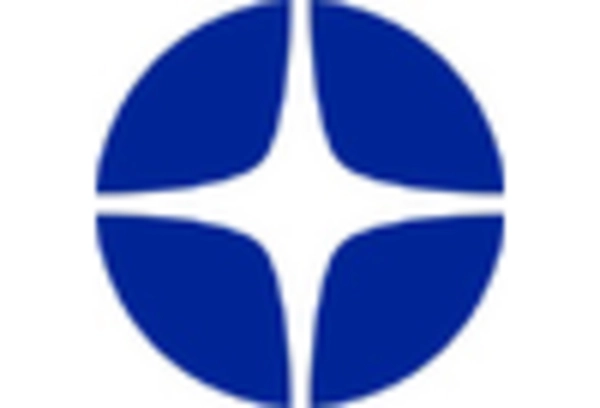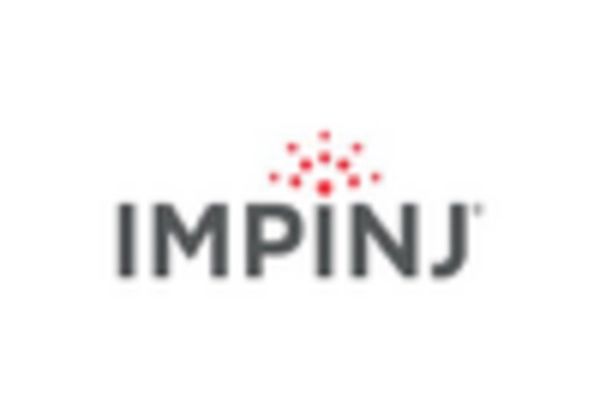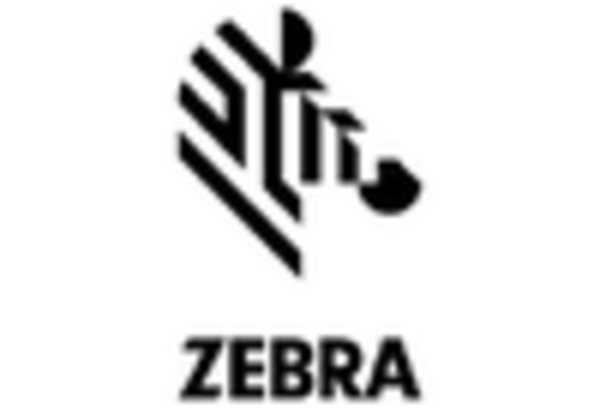Growth of E-commerce and Online Retail
The growth of e-commerce and online retail is significantly impacting the Consumer Asset Tracking Market. As more consumers turn to online shopping, businesses are compelled to enhance their logistics and inventory management capabilities. The e-commerce sector is projected to reach USD 6 trillion by 2024, necessitating efficient asset tracking solutions to manage increased inventory levels and streamline operations. Companies are investing in technologies that provide real-time visibility into their assets, ensuring timely deliveries and improved customer satisfaction. This trend is likely to drive the demand for advanced tracking systems, positioning the Consumer Asset Tracking Market for substantial growth as businesses adapt to the evolving retail landscape.
Emergence of Smart Cities and Infrastructure
The emergence of smart cities and infrastructure is influencing the Consumer Asset Tracking Market in profound ways. As urban areas become increasingly interconnected, the need for efficient asset management systems is paramount. Smart city initiatives often incorporate advanced tracking technologies to monitor public assets, such as transportation systems and utilities. This trend is expected to create new opportunities for the Consumer Asset Tracking Market, as municipalities and organizations seek to implement solutions that enhance operational efficiency and service delivery. The integration of smart technologies into urban planning is likely to drive demand for innovative asset tracking solutions, fostering growth within the industry.
Increasing Focus on Data Security and Privacy
In the Consumer Asset Tracking Market, the increasing focus on data security and privacy is becoming a critical driver. As businesses adopt advanced tracking solutions, concerns regarding the protection of sensitive information are rising. Regulatory frameworks, such as the General Data Protection Regulation (GDPR), are influencing how companies manage and store data. Organizations are now prioritizing solutions that not only track assets but also ensure compliance with data protection regulations. This shift is likely to propel the demand for secure asset tracking systems, as companies seek to mitigate risks associated with data breaches. The Consumer Asset Tracking Market must adapt to these evolving requirements to maintain consumer trust and safeguard their operations.
Rising Demand for Inventory Management Solutions
The Consumer Asset Tracking Market is experiencing a notable surge in demand for effective inventory management solutions. Businesses are increasingly recognizing the necessity of tracking assets in real-time to enhance operational efficiency. According to recent data, the market for inventory management software is projected to reach USD 5 billion by 2026, indicating a compound annual growth rate of approximately 10%. This growth is driven by the need for businesses to minimize losses and optimize stock levels. As organizations strive to improve their supply chain processes, the integration of advanced tracking technologies becomes essential. Consequently, the Consumer Asset Tracking Market is likely to benefit from this trend, as companies seek to implement robust systems that provide accurate visibility into their assets.
Technological Advancements in Tracking Solutions
Technological advancements are playing a pivotal role in shaping the Consumer Asset Tracking Market. Innovations such as RFID, GPS, and Bluetooth technologies are enhancing the accuracy and efficiency of asset tracking. These technologies enable businesses to monitor their assets in real-time, reducing the risk of loss and theft. The market for RFID technology alone is expected to grow significantly, with estimates suggesting it could reach USD 26 billion by 2025. This growth reflects the increasing reliance on sophisticated tracking solutions that provide actionable insights. As organizations adopt these technologies, the Consumer Asset Tracking Market is poised for expansion, driven by the demand for more precise and reliable asset management systems.
















Leave a Comment